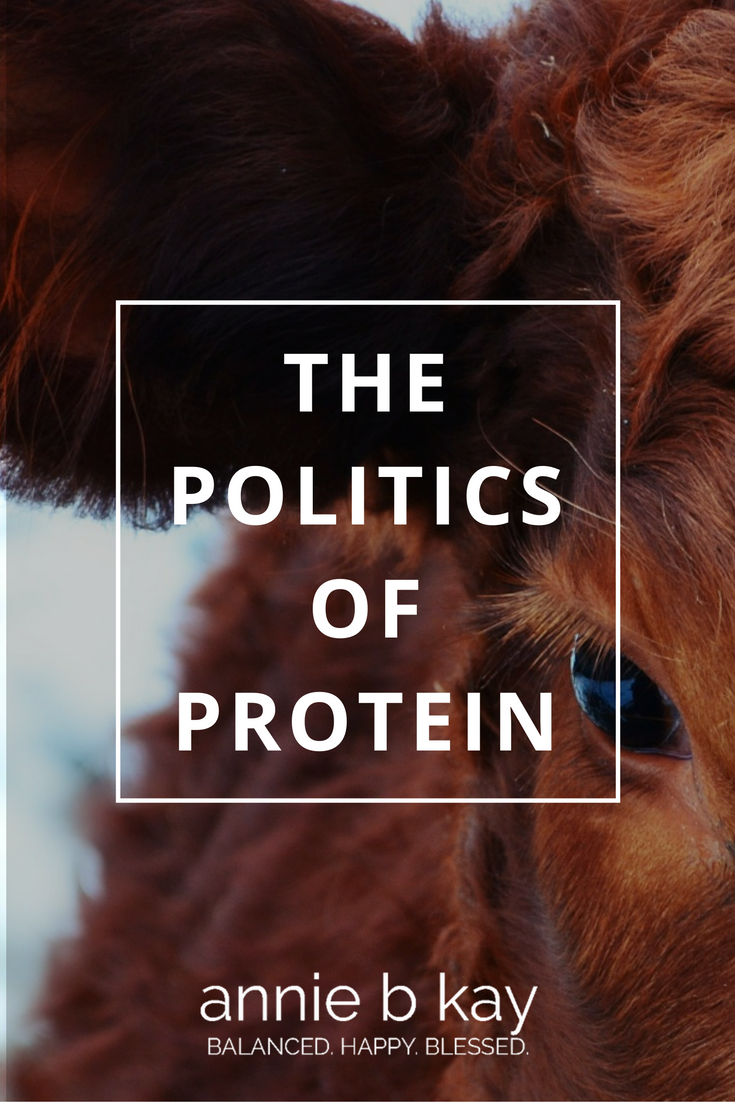
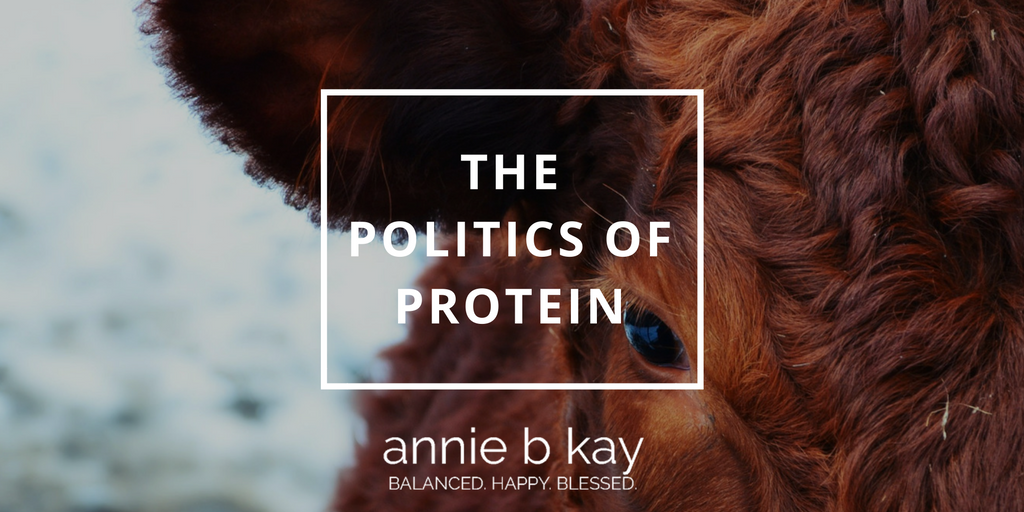
Protein is critical but most Americans overdo it. Animal-rich diets have a larger carbon footprint – not so good for the environment. In a vegan (animal-free) diet, protein is widely available. We humans love us some protein!
How do we eat in balance – healthy for us and also our beautiful planet?
Recently I was teaching with a colleague I love and respect, who mentioned that the latest thinking on protein needs is 30/30/30 (grams per day). I sat up – that’s a lot of protein and has environmental implications, I thought. At that level of intake, it’s difficult if not impossible to get adequate protein from a vegan diet. I wanted to know more. This higher recommendation is nearly twice what the NIH recommends (around 50 grams – a little more for men, a little less for women).
That sparked a months-long investigation for me, that’s not yet finished!
It sent me to pubmed, the NIH’s library of clinical research, to see where the recommendation came from. All I could find were a collection of papers from something called Protein Summit 2.0, and I’m grateful that now clinical research papers need to list funding, because there they were – many of the business interests and advocacy groups whom you’d think would support it. Sure enough, papers from that gathering recommended this higher level, with nods from the egg, beef, pork and dairy industry.
Protein is critical for health throughout the lifespan, and can be a challenge if protein needs are high, as in performance athletes and those healing from injury or disease. However, it has been well established that in a vegan diet, protein is widely available. Vegans do have to be aware of protein, and taking some with each meal and snack is a great guide – think nuts or nut butters, beans, seeds and seed butters, whole grains and most vegetables. Vegan diets with these foods at the center are some of the most healthful on the planet. The planet smiles on vegan diets too, as protein is the macro-nutrient that tends to have the greatest impact on carbon footprint.
For more on the link between protein and the environment, look at this set of graphics from the World Resources Institute, and the Environmental Working Group’s Meat Eater’s Guide.
Recently a smart RDN (Registered Dietitian Nutritionist) gave me the name of a researcher she respects who has been publishing studies on this higher level of protein. I have yet to investigate, but will (and will pass my take along).
What’s an eater to do? Here are my thoughts.
- No matter what your choice – vegan, flexitarian (an eater of a whole-foods plant-based diet with a little fish, eggs and dairy), or other – have some protein – mostly plant protein – with each meal and snack.
- If eating animals helps you nutritionally, please don’t feel bad about it. Honor the life that has been given. It is the cycle of nature and life and ultimately, nearly everyone gets eaten in the end.
- Honor the fact that protein is richly sustaining, and takes more resources to create – so, resist the temptation to overdo it. It is human nature to overdo it. Protein powders likely have the greatest carbon footprint of all – could you do it with an egg or seed powder? Focus on eating the CDC-recommended 9-13 servings of plants daily. Can you have a bit more of your protein from plants without suffering nutritionally?
What about me? I am a flexitarian – I eat about 1 serving of animal per day, in the form of mostly eggs, but occasionally fish or meat. I put whole grass-fed milk in my morning coffee, and enjoy a bit of ghee (clarified butter) from grass-fed cows. I mostly hit the recommended number of plants, but left to my own devices my taste would be pure starch! So, when life is full I have to remind myself to eat plants, and do on occasion retrace my day and find myself swimming in toast, and potatoes. Then it’s time to begin again, dust myself off and chop up some – hale kale!
Here are a couple of my plant-protein-rich recipes:
I’m big on soups!
What about you – how do you honor protein and meet your needs?
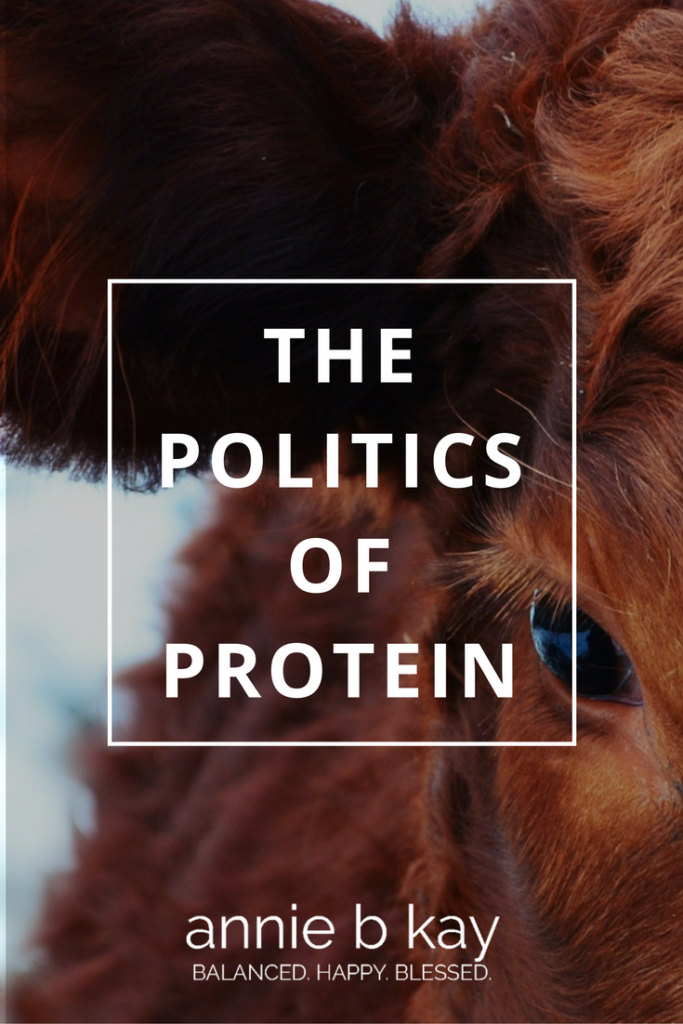
Pinterest
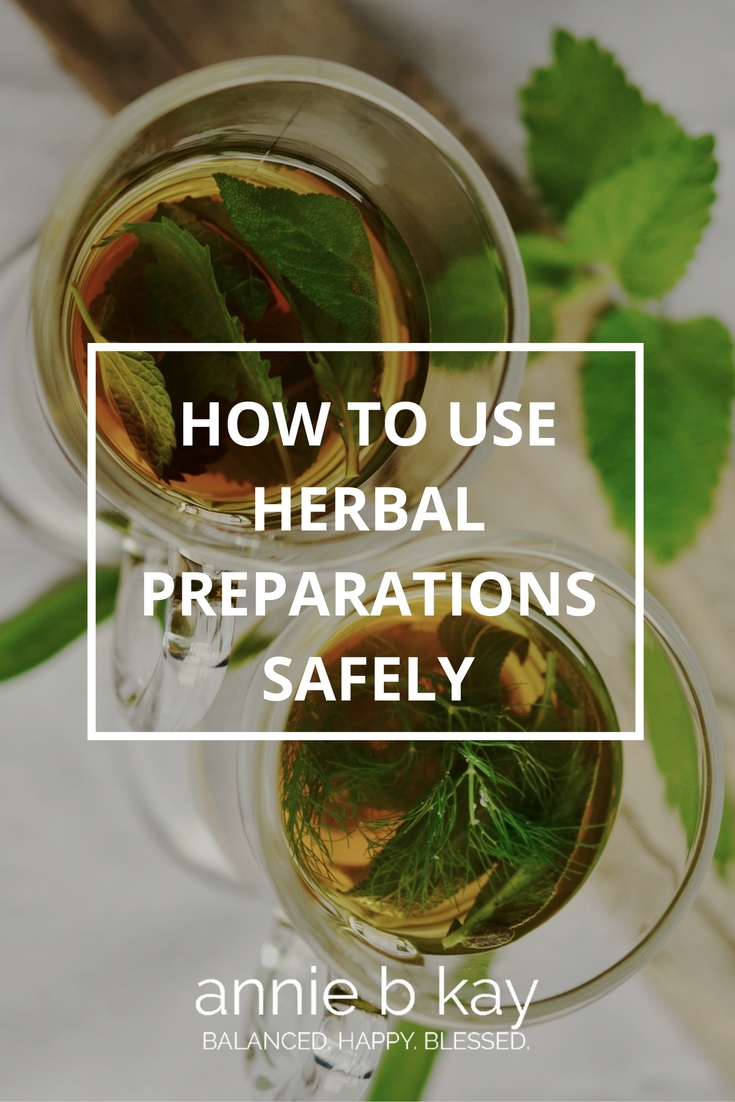
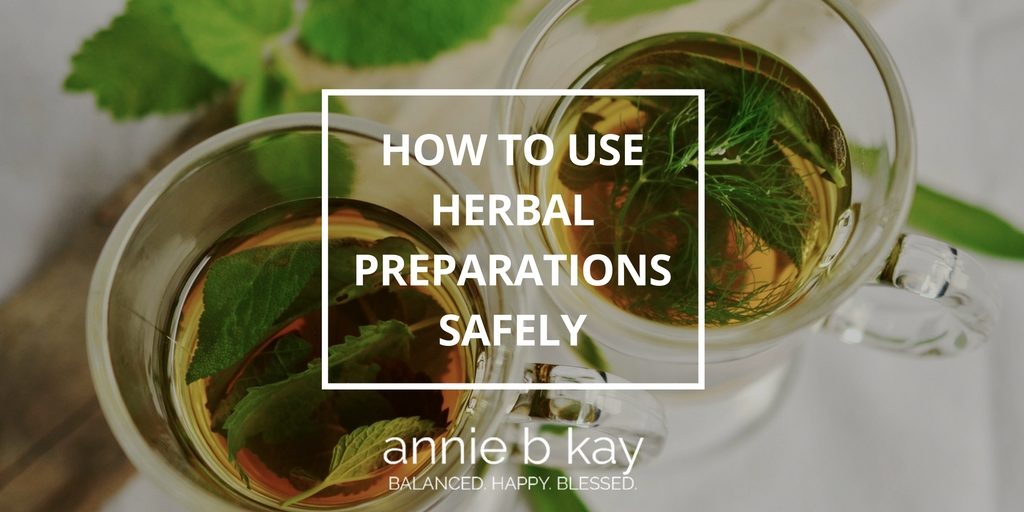
This month in the newsletter I wrote about putting summer’s bounty by for colder months, and I also wrote a brief piece on how to use herbal preparations safely. Herbs, herbal tinctures, flower essences and other botanicals can be wonderful allies for healing, but like any medicinal substance, different preparations are of varying quality and composition and can cause unexpected side effects. Here are a few thoughts, and suggestions for staying safe as you explore.
The Wise Herbalist: please be safe
After last month’s newsletter on making flower essences, I had a thoughtful exchange with a reader concerned about the toxicity of buttercup. Flower essences don’t contain any of the plant matter (they operate like homeopathy), so not to worry. But, since I have been writing more about the use of herbs and interest is certainly growing, I thought I’d give you a little overview of herbal preparations and how they operate so as to keep you nice & safe as you venture into this newly revived mode of healing.
You can think of herbal healing as ranging from gross physical (food, pharmaceuticals and infusions like teas operate on this level) to more subtle mind-body like tinctures, where plant matter is placed in alcohol for a number of weeks, and plant oils, where plant matter is placed into an oil for a number of weeks and the oil then carries some plant matter. Then there are those that operate on the subtle energetic level (homeopathic preparations and flower essences, for example).
For preparations that work on the physical level, it’s important that you stick with things that are edible and medicinal. So, in the case of buttercup, you don’t want to make an infusion tea with it nor eat it, because it is not edible – it contains compounds that can be toxic. Same with tinctures – stick with medicinal and culinary herbs for these. Flower essences don’t contain actual plant matter – they are energetic preparations – you can make an essence out of any plant and you won’t have a toxicity reaction to it unless you have a reaction to the carrier (often brandy, but you can also use vinegar).
Now, let’s talk about essential oils. These are wonderful but very condensed and strong extractions of the oils of plants. I have an essential oil diffuser in my office with a stress ease mixture and it works like a charm. Essential oils can damage your skin if you apply them directly and many people are sensitive. They can also react with your skin when exposed to the sun – I’ve had an instance of this and it wasn’t pretty!
I’ve been giving herb walks at Kripalu and interest in wild edibles and herbs is really growing. If you have an interest in wild edibles, take your time and stick to things like dandelion, plantain and garlic mustard that are common and safe, then slowly and safely expand your knowledge from there. Like anything, there are things to be aware of, but if you approach nature with respect and curiosity (and a few of the many good references), it will be a wonderful exploration.
Enjoy the season in fun and deliciousness,
Annie
Annie B. Kay MS, RDN, E-RYT500
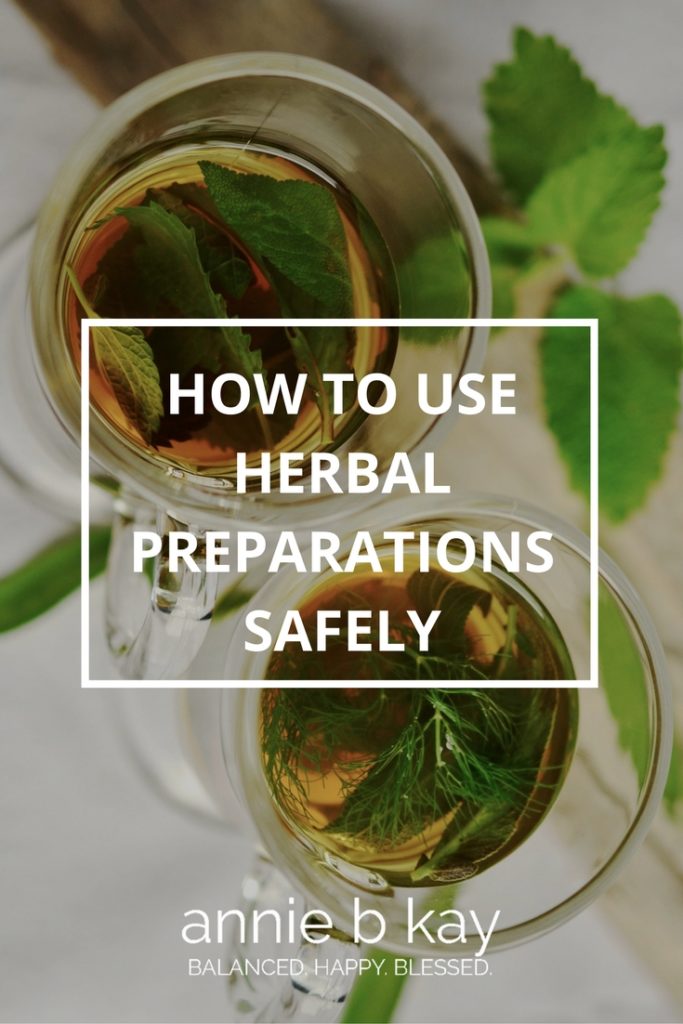
Pinterest
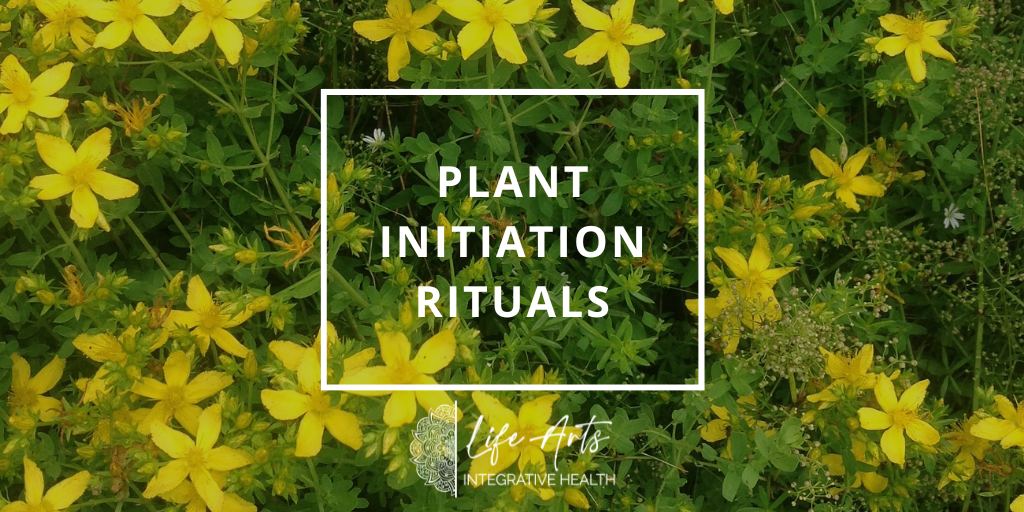
Updated May 17, 2023
Rituals add meaning to life. Over the past several years I have been participating in plant initiation rituals. They connect me more deeply and more coherently with nature than I have ever been.
As I write this, the wheel of the year approaches the summer solstice. This day is truly filled with light. I am preparing for a shamanic plant initiation that will unfold next weekend, a gathering of plant people led by my teacher and St. John’s Wort.
What is Plant Initiation?
Plant spirit healing is a shamanic plant medicine practice that works energetically with and through plants for health and healing. In that tradition, a plant initiation is a coming together in a ritual to honor, connect deeply with, hear and receive the healing gift of a plant. It tends to involve experiencing the plant in a variety of ways; through breath, dieting (ingesting) wonderful things prepared by the facilitator. It is done in a ceremony; with singing, fires, shamanic guided imagery journeys and the like.
My Experience With Plant Initiations
I have undergone several plant initiations so far and treasure this ritual experience in my life. Perhaps it’s my Catholic upbringing, filled with ritual. I was initiated by Tulsi (the green goddess!) and left with a spirit soul sister, someone to go mystery-shopping within the cosmos. From Tulsi I learned ageless beauty and that all of the Shakti goddesses are within me – I can learn to draw upon them when needed. I was initiated by Dandelion (the indestructible grandfather guide!) at Damanhur, the eco-spirit community in Italy, and learned steadfast resiliency and impenetrability of spirit. Now it is St. John’s, and I already have a close relationship with the bestower-of-light. I hope to burn off a bit of dross and am open to an enlightening experience!
Bless you and may you have your own nature encounter today. Tell us about it!
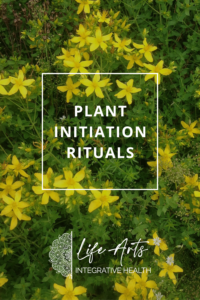
Pinterest
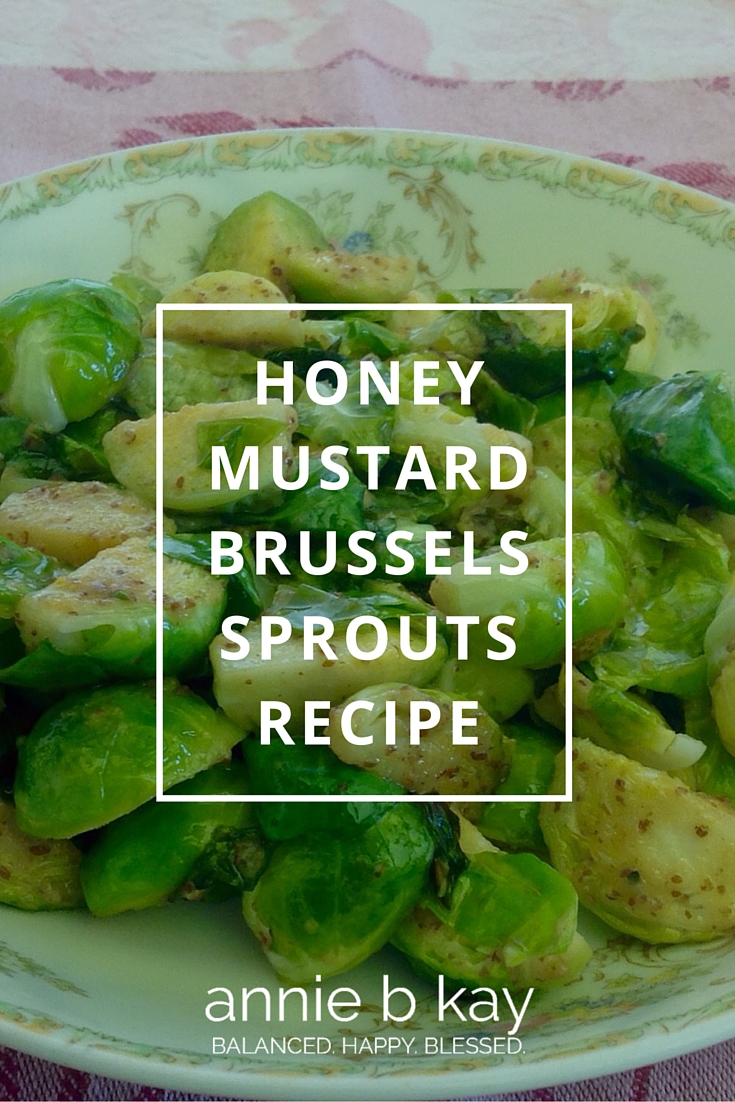
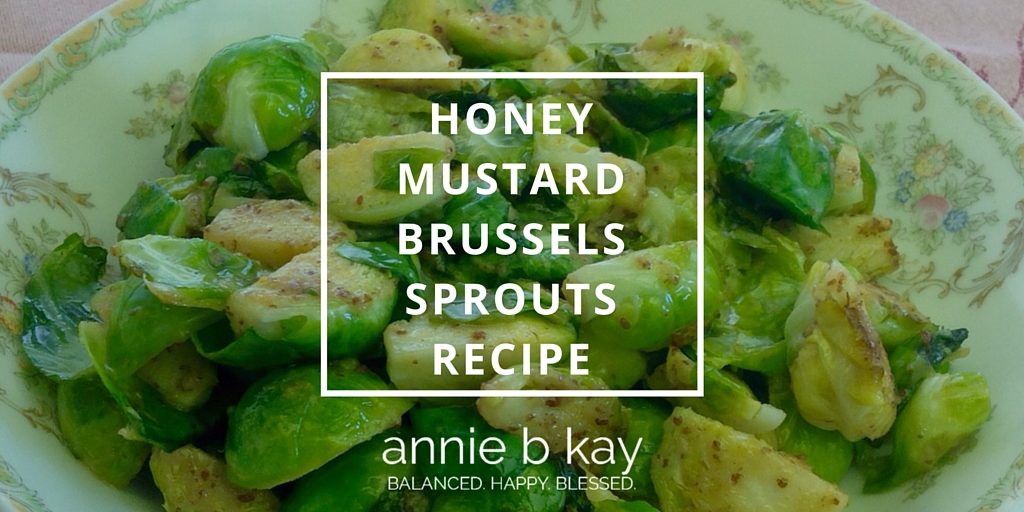
When I was young I worked on Bentley’s Farm in my bucolic hometown of Lyndonville, NY. Like many kids in my town, I walked down to Bentley’s to pick apples and raspberries, hoe tomatoes and plant Brussel sprouts. I sat on a contraption with seven other women (a combination of middle school girls and migrant farmers) which was dragged behind a tractor, with a tray of seedlings in front of me. A metal arm circled up between two of us, and every other one, we set the seedlings to be planted. What I remember most clearly is the exhaust and the dirt – dirt deep in my ears, in my teeth, way up my nose – you get the picture. Too, it’s one of those heavy-equipment jobs that we didn’t really think about but modern moms would probably not allow their kids to do…too dangerous. Things did get caught in those metal arms, and it was unnerving.
While I always liked cabbage, these sort of experiences in early life tend to put one off certain foods, and Brussel sprouts were one of those for me. Not until just the last couple years have I allowed myself this particular appreciation. Perhaps the smells and the relentlessness of planting who knows how many thousands of Brussel sprout plants has faded. Happy to say I now I love ’em. One of my favorite ways of serving these little lovelies is with a seasoning of local honey and a good seeded Dijon-style mustard.
Honey Mustard Brussels Sprouts
Ingredients
- 1/2 pound Brussel sprouts, about a dozen
- 2 Tbsp grape seed oil or ghee
- 3 Tbsp Dijon-style mustard
- 1 Tbsp local honey
Directions
- First, clean the sprouts by pulling off any yellowed leaves, and trimming the base. Rinse if needed then slice into quarters.
- Heat a large heavy skillet on medium-high, and add the oil or ghee.
- Pop the Brussel sprouts into the oil and sauté for 10-15 minutes until they reach the desired texture and done-ness (I like them al dente – with some life left in them!).
- Spoon honey and mustard into the dish and toss. Heat until the well coated and yummy.
- Serve warm, and saves well for a day or two.
Here’s the incomparable George Mateljan Foundation on Brussels Sprout Nutrition.
What’s your favorite way to eat Brussels sprouts?
May you stay warm and dry and eat well this week.
New year blessings – Annie
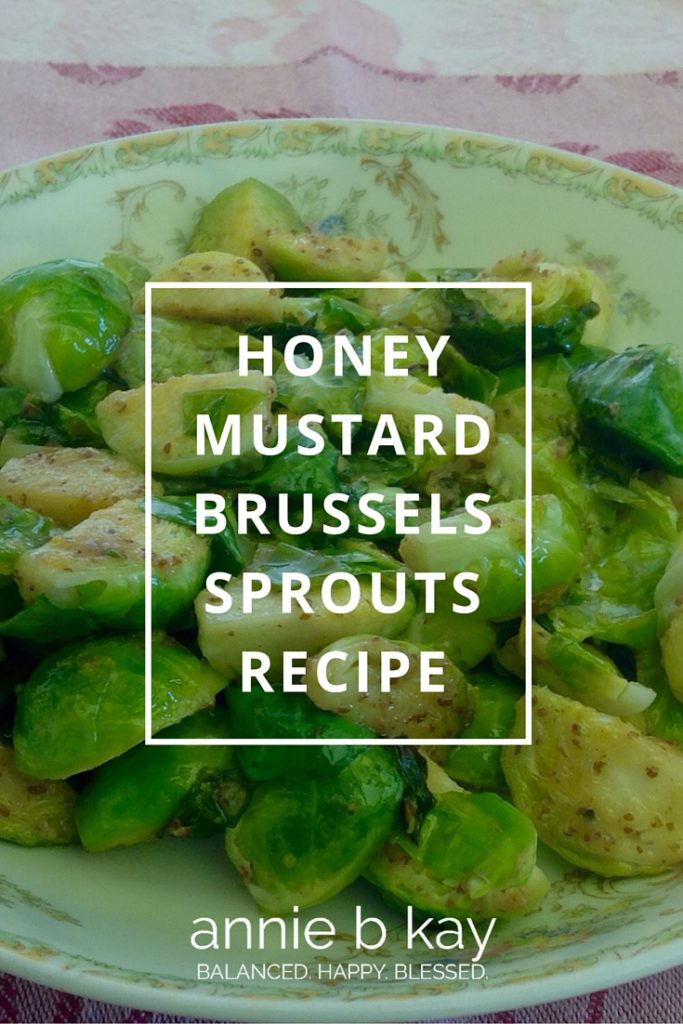
Pinterest
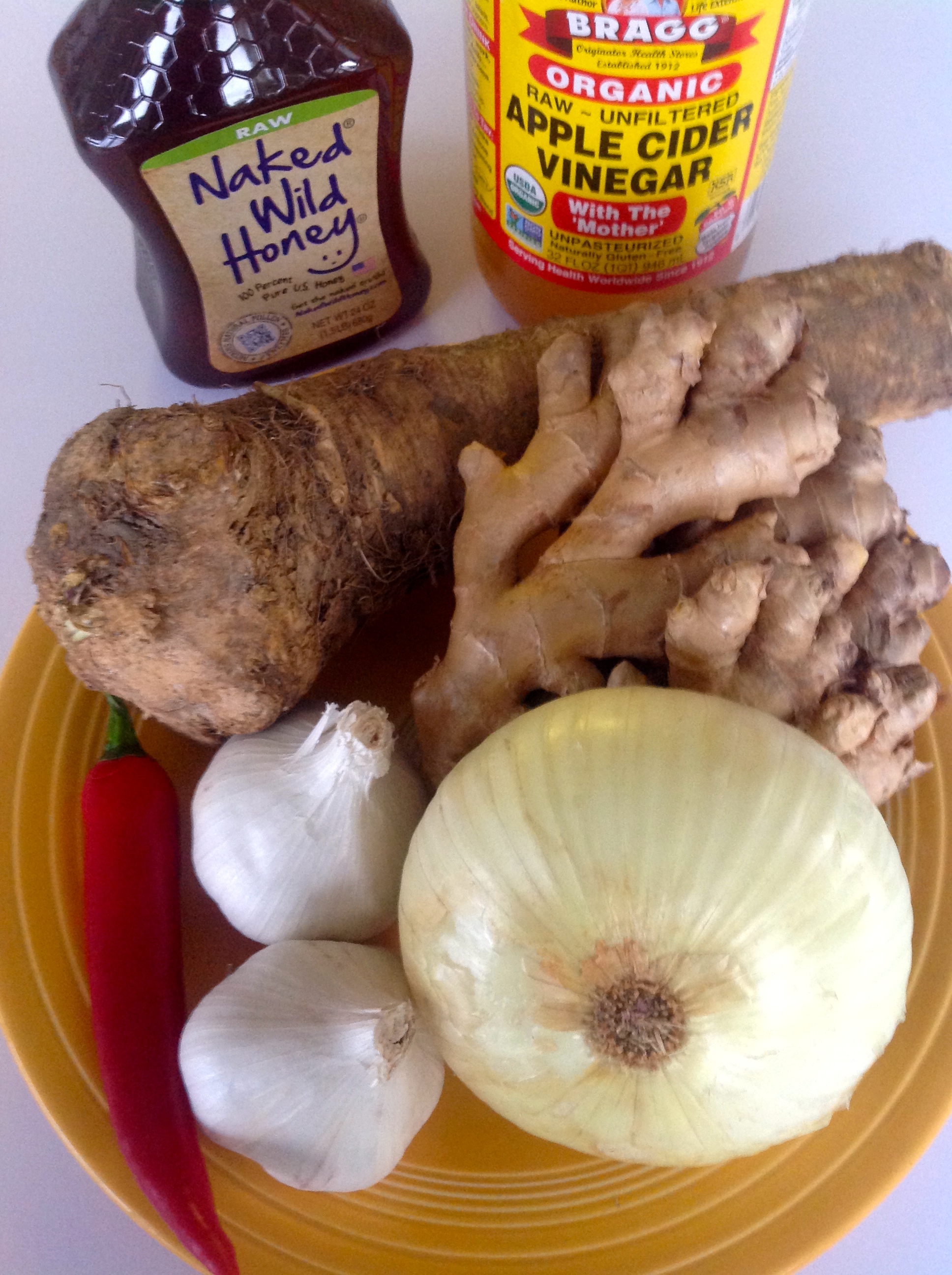
A Materia Medica is a library of medicine, usually botanicals. Herbal books and websites often have an area where the health and medicinal qualities of particular plants are gathered. Likewise, many cookbooks have a section that focuses on the use and perhaps benefits of particular ingredients. Herbalists and cooks have great respect for the qualities of each plant.
My recipes use whole food plant based ingredients which are naturally healthful. Certain foods and plants carry specific health and healing gifts, and by knowing who you are, and who your ingredients are, you can surround yourself with delicious foods that keep you in balance.
Over the next year, I’ll be building my materia medica of botanicals and plants with particular healing gifts. I will include a roundup of Western literature, as well as herbal and folk wisdom, and the plant-spirit energy template of the plant. Plants have so much to teach us, and we can heal so deeply from getting to know them as individuals and arranging them in choruses as recipes.
For your pleasure! Enjoy the journey!














